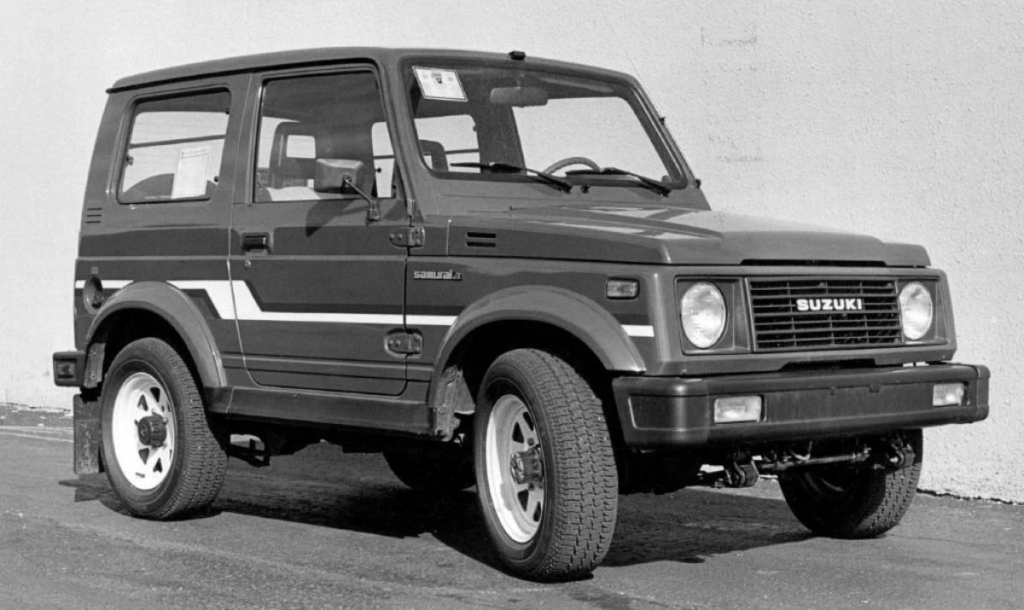You have most likely encountered a Samurai on city streets, college campuses, or in the wilderness. Suzuki’s small 4×4 is capable of going where other vehicles cannot, allowing it to appear almost anywhere. While the Suzuki Samurai enjoyed a brief period of popularity in the United States, the country was neither its beginning nor its conclusion.
A summary of the chronology of the Suzuki Samurai
The story of the Suzuki Samurai began in 1968 as the ON360, a Kei-class car manufactured by the Hope Motor Company in Japan. The car was imported to the United States for the 1986 model year and was discontinued in 1995.
In Japan, there were specific capacity requirements for Kei-class vehicles to qualify for tax incentives, and Suzuki acquired Hope in order to join this market rapidly. In 1970, Suzuki rebranded the Hope ON360 as the LJ10 (LJ for Light Jeep), although it is now known as the Jimny in other regions.

The second-generation Jimny debuted in 1981, and in 1985 Suzuki brought the 1986 Samurai model to the United States, equipped with a 1.3-liter, four-cylinder engine that produced 63 horsepower and 74 lb-ft of torque. MotorTrend reported that it took the Samurai 16.9 seconds to accelerate from 0 to 60 mph and 20.47 seconds to complete the quarter mile at a speed of 64.5 mph at the finish line.
With its standard four-wheel drive and manually-locking front axles, the Samurai had unparalleled off-road capability.
Suzuki Samurai issues
According to Hagerty, one of the most significant issues with the Suzuki Samurai is its dreadful safety reputation. In the late 1980s, for instance, the Samurai lacked airbags and anti-lock brakes (ABS), and Suzuki issued a recall for seatbelts that would not attach. In addition, its light weight and short wheelbase led to a regrettable and unwarranted rollover incident during a videotaped Consumer Reports test; more on this in a moment.

Other issues with the Samurai include corroded floorboards, clicky starters, and leaking distributor O-rings. In addition, the original Samurai carburetor is intricate and fussy, prompting many owners to replace it with a simpler model. The plastic selector frequently breaks due to age and wear, but it’s simple to replace with a brass unit.
The ultimate failure of SUVs
Consumer Reports captured on film, in 1988, a Suzuki Samurai veering onto two wheels during a high-speed collision avoidance test. The magazine made the video public, making it available to anyone who wished to view it. The footage was broadcast on prime-time television alongside the statement that little Samaruai can simply turn over.
The extended video footage shows Consumer Reports engineers modifying the test parameters to force the Samurai to fail the test after passing the original course, with all four tires remaining securely planted on the ground at velocities up to 55 mph. Suzuki sued Consumer Reports as a result of the publication’s modified test and incendiary claims. The two parties reached an out-of-court settlement after a protracted court battle.
Nonetheless, by the time the legal conflict was over, Samurai sales had dropped to a few thousand per year from more than eighty thousand the year before the fateful test. Despite the fact that the Suzuki Samurai continued to be manufactured for a few more years, its availability in the United States presumably terminated as a result of the Consumer Reports scandal.

